
The 1560 Geneva Bible – First Edition Facsimile from The Bible Museum is a facsimile of the first edition Geneva Bible. It includes the Apocrypha. It’s ideal as a display piece for any home, office, or church. It’s available in regular (hardcover) and deluxe (genuine leather) editions. I’m reviewing the regular edition in burgundy hardcover. It was printed in China.
The KJV Store provided this Bible in exchange for an honest review. I was not required to give a positive review, only an honest one. All opinions are my own.
_________________________________________________________
This Bible is available at (includes some affiliate links)
_________________________________________________________
Table of Contents
Video Review
Binding
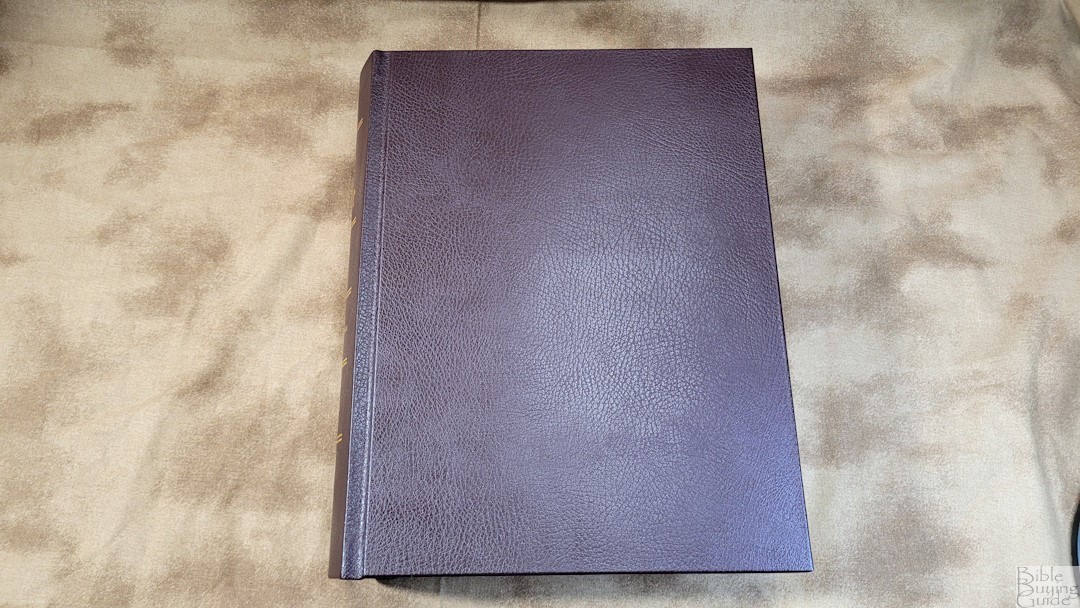
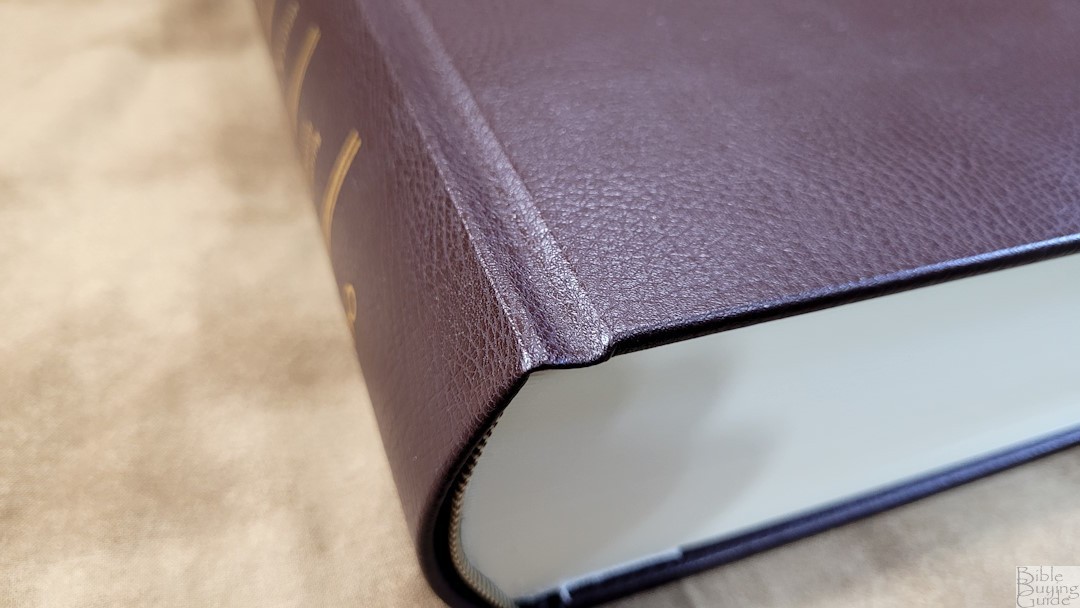
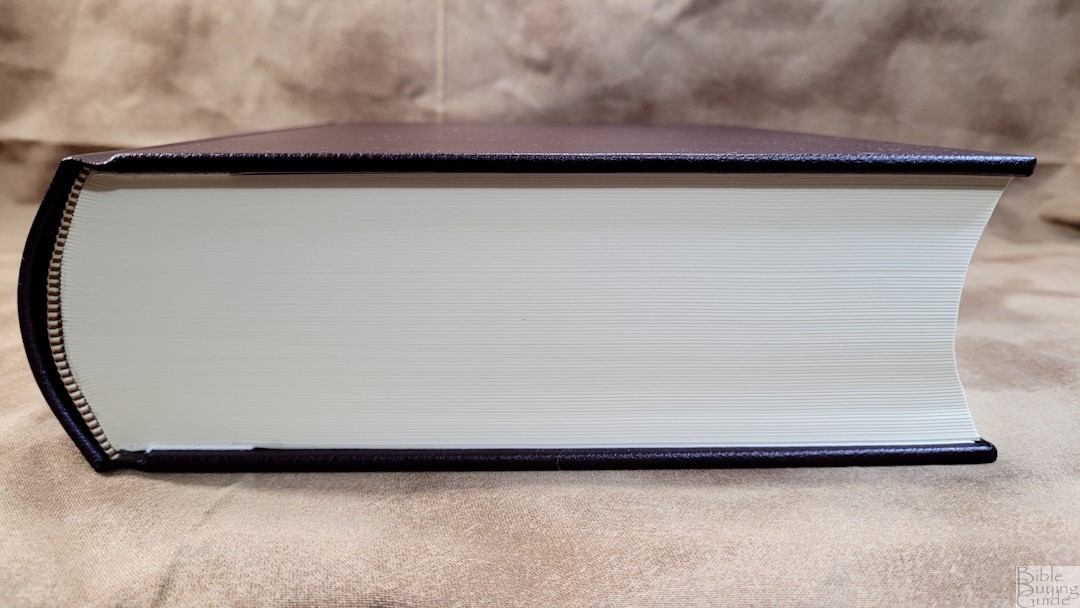
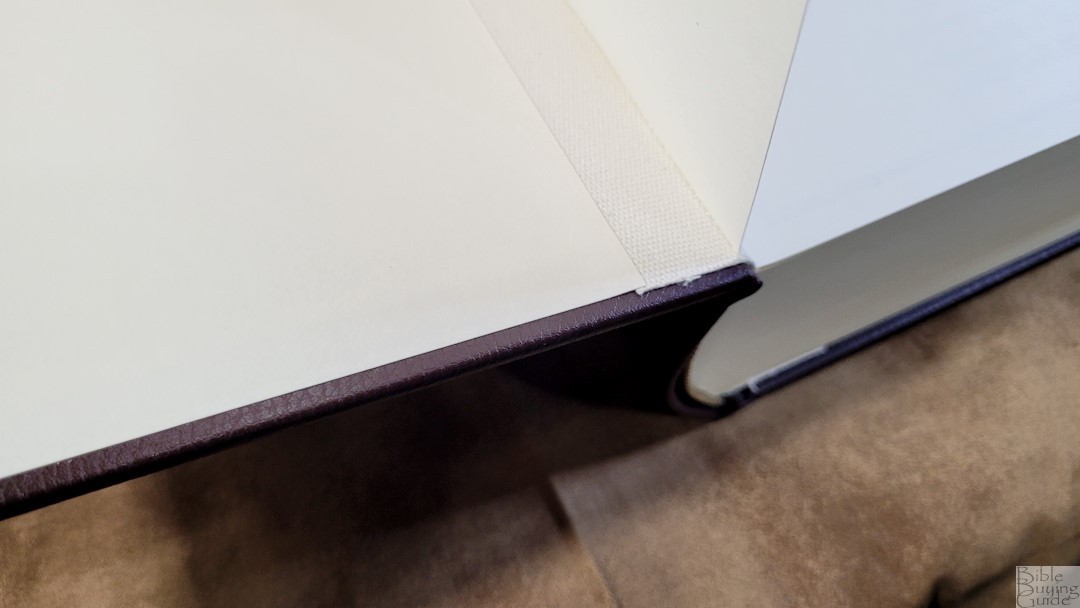
This is a hardcover that’s covered with burgundy bonded leather. I love this dark color. It has a pebbly grain that looks elegant. Nothing is printed on the front or back. The spine is rounded and includes gold text. The liner is paste-down with an extra-thick paper. You can see the reinforced cloth. The block is sewn and the cover has no trouble staying completely open to any page. This is a large Bible at 9 x 11 x 3″ and weighs 7 lbs, 2.1 oz. At this size and weight, it’s ideal for a desk, coffee table, or other type of table for display.
Paper
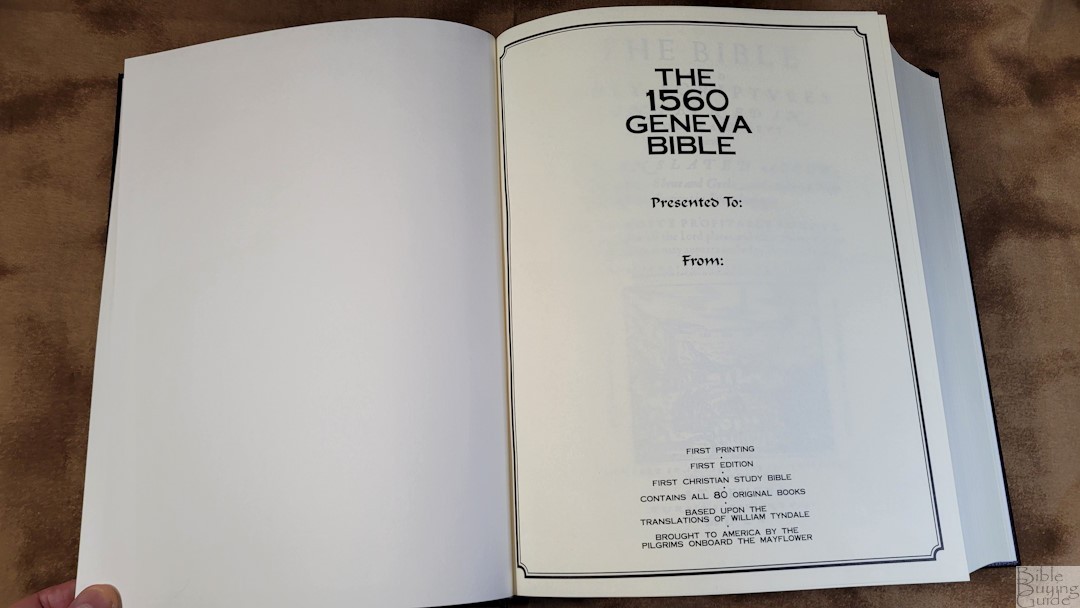
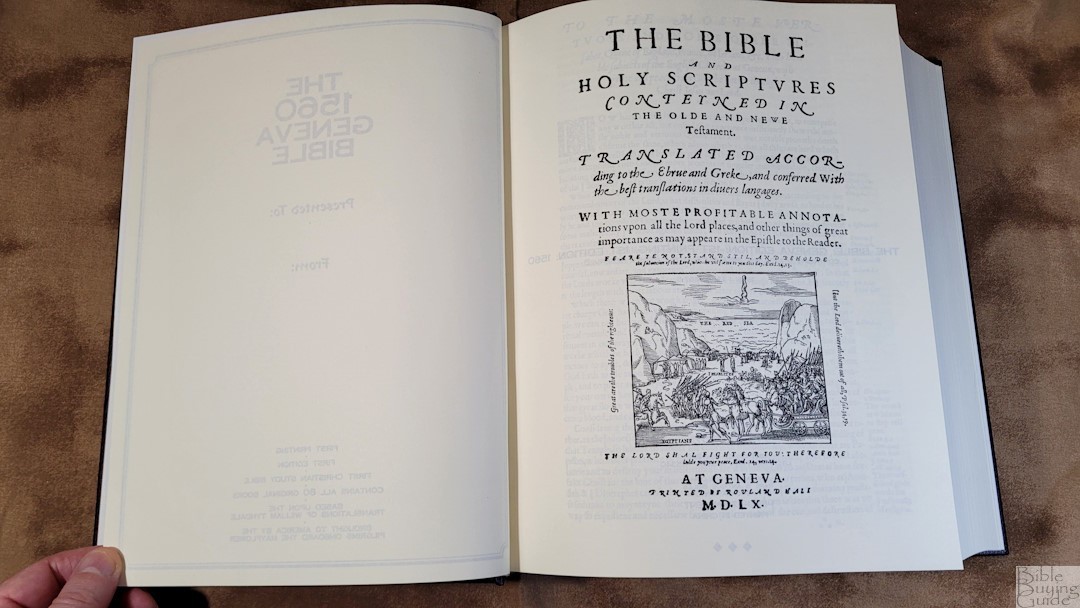
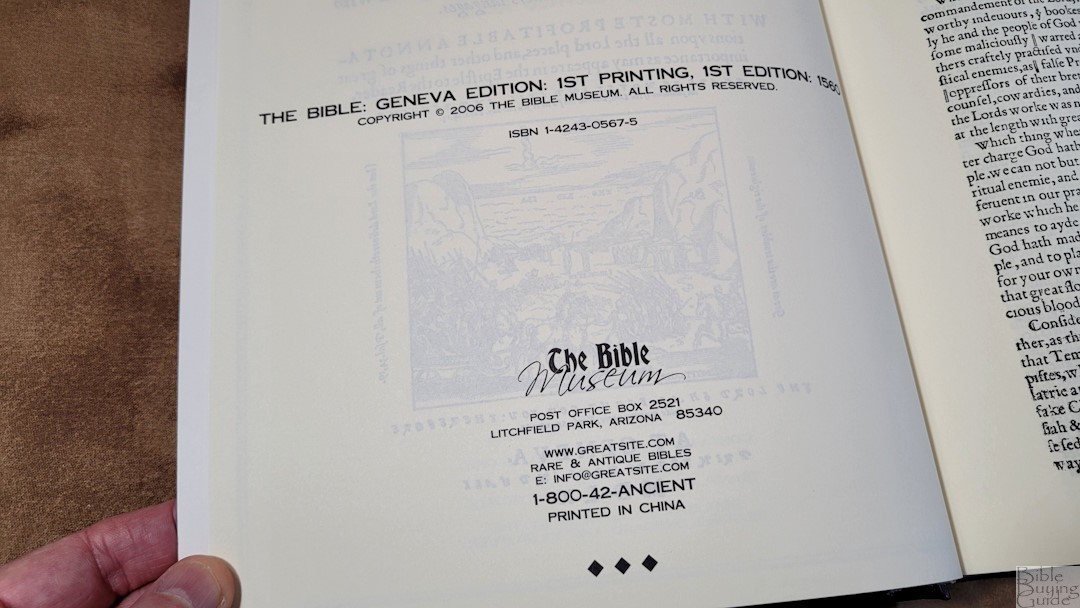
The paper is heavy cream archival grade, 100% acid-free. It looks and feels high-quality. The GSM feels between 60-80 GSM. It’s cream in color and is highly opaque. The print has a high enough contrast that the color doesn’t affect readability. The paper is easy to grab and turn.
Typography and Layout
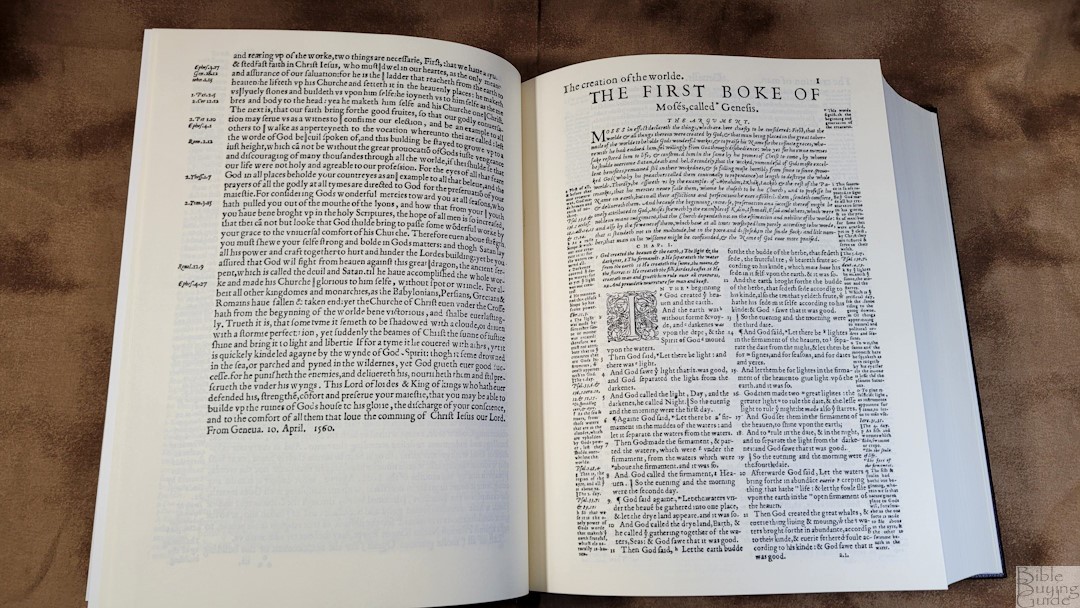
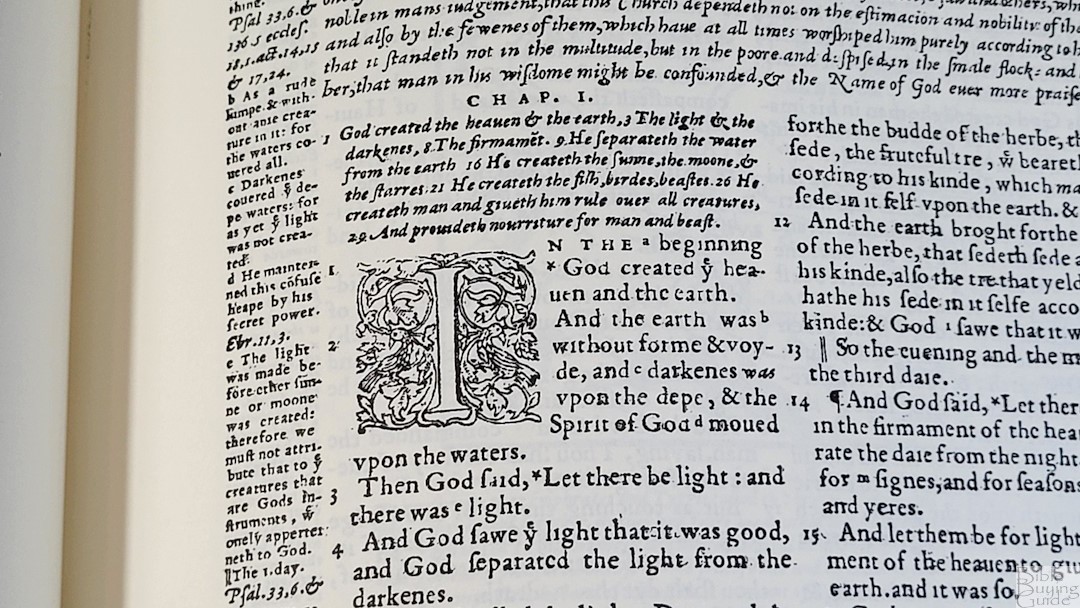
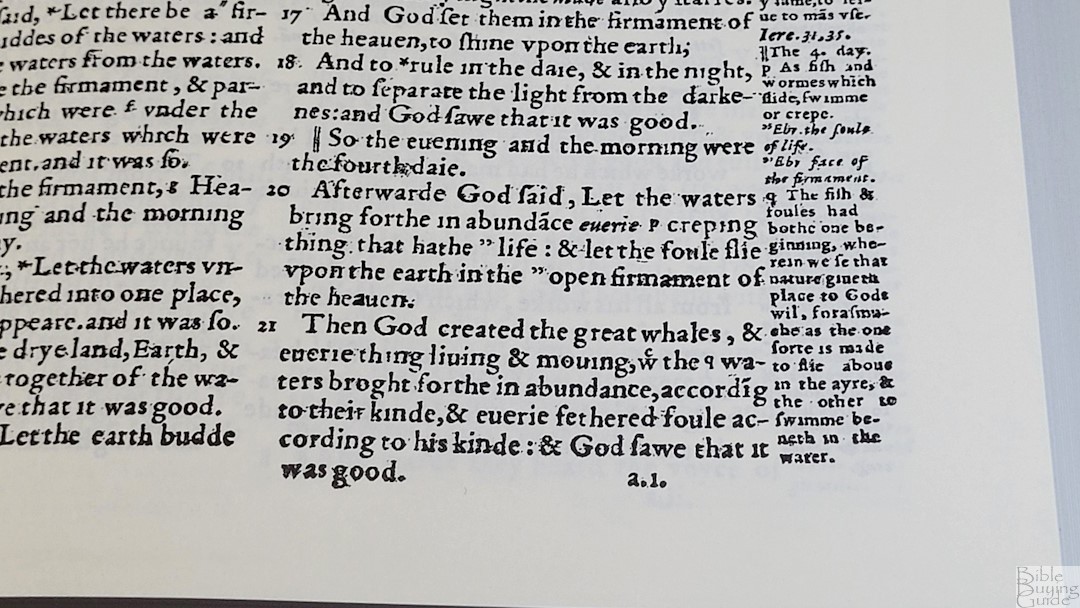
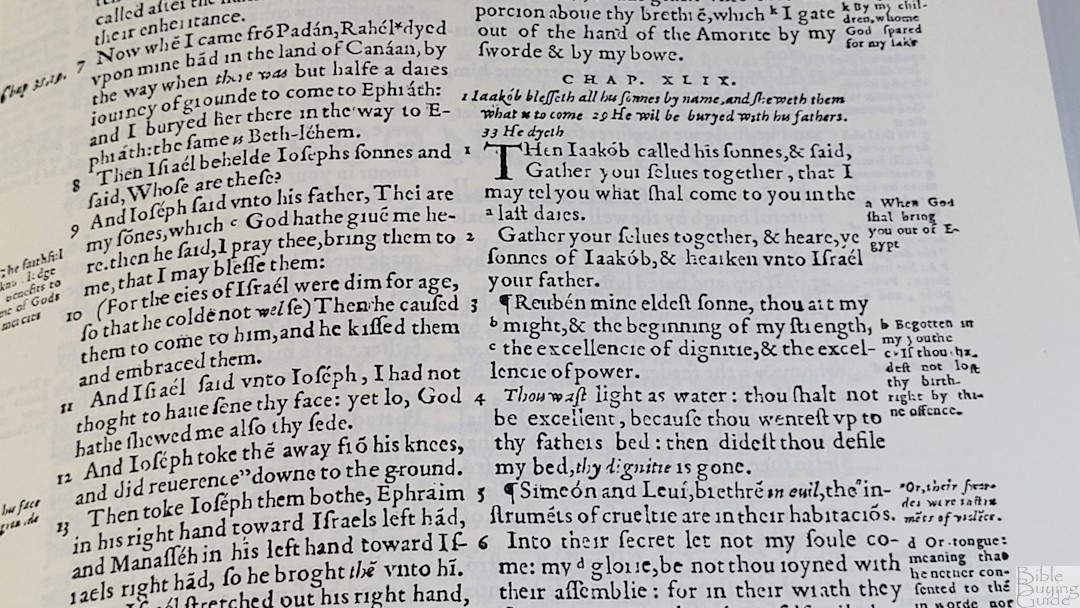
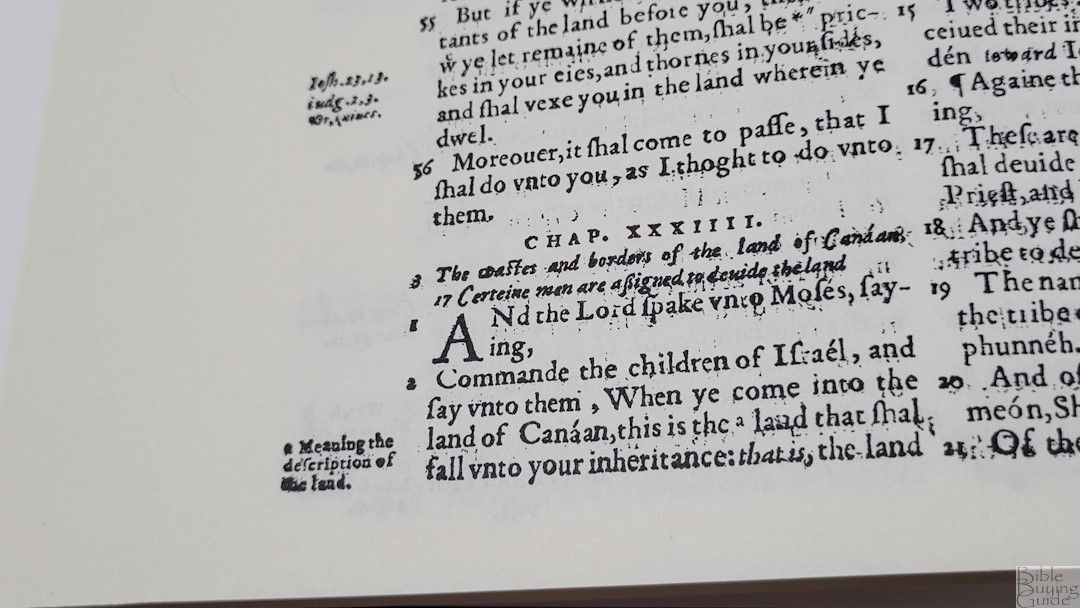
The 1560 Geneva text is presented in a verse-by-verse format. Footnotes are placed in the outer and bottom margins, so they wrap around the text as needed. The header shows the book name in the center on the left page and the chapter number in Roman numerals in the center on the right page. The page number appears in the outer margin of the right page. Both pages show a summary above each column. It has a 7-line decorative drop cap at the beginning of each book. Books include a short introduction under the title.
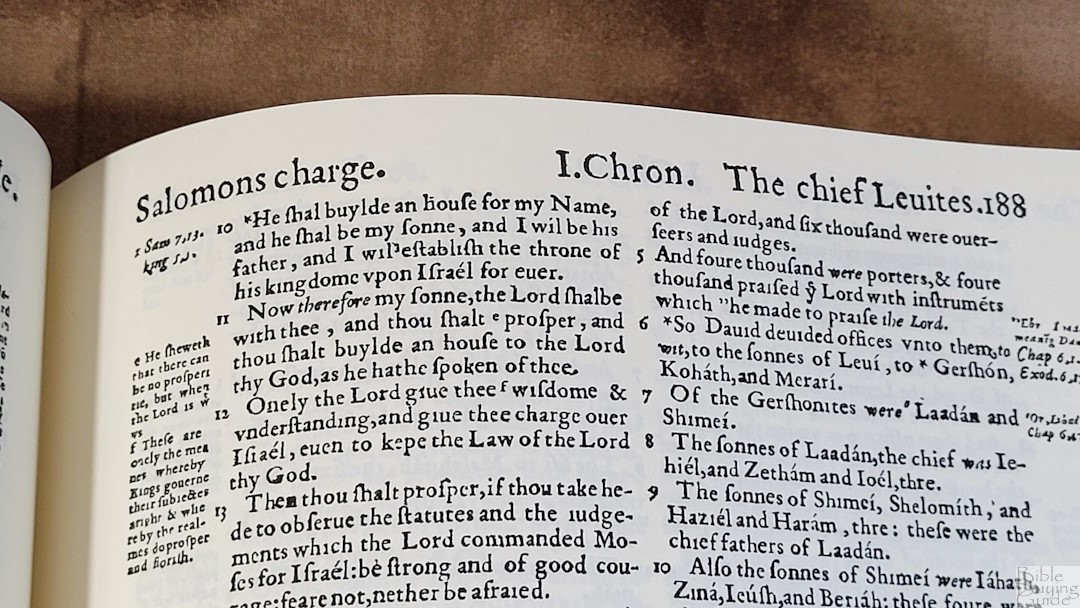

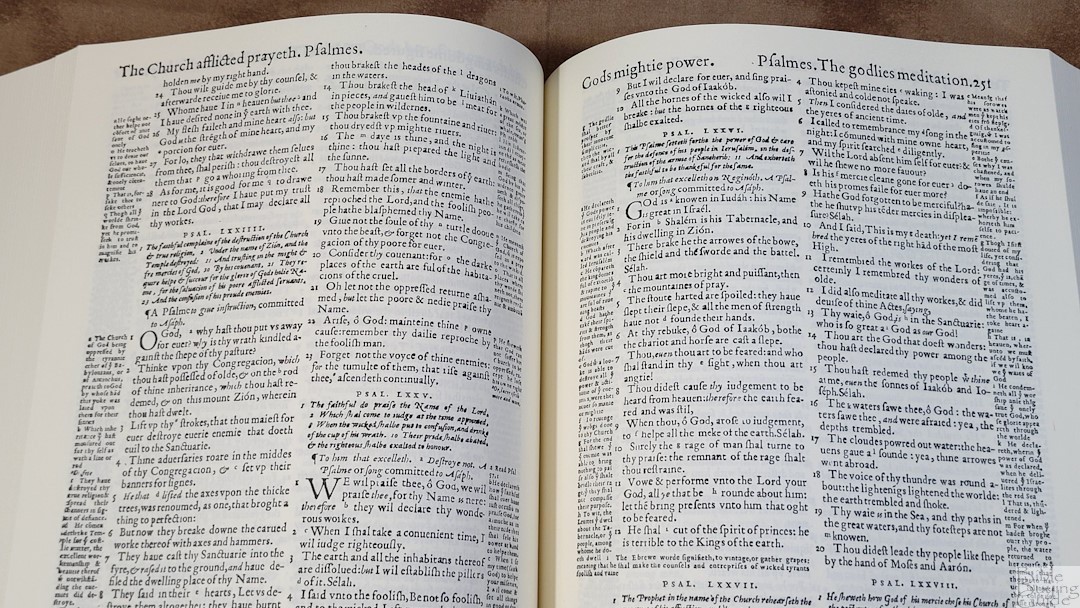

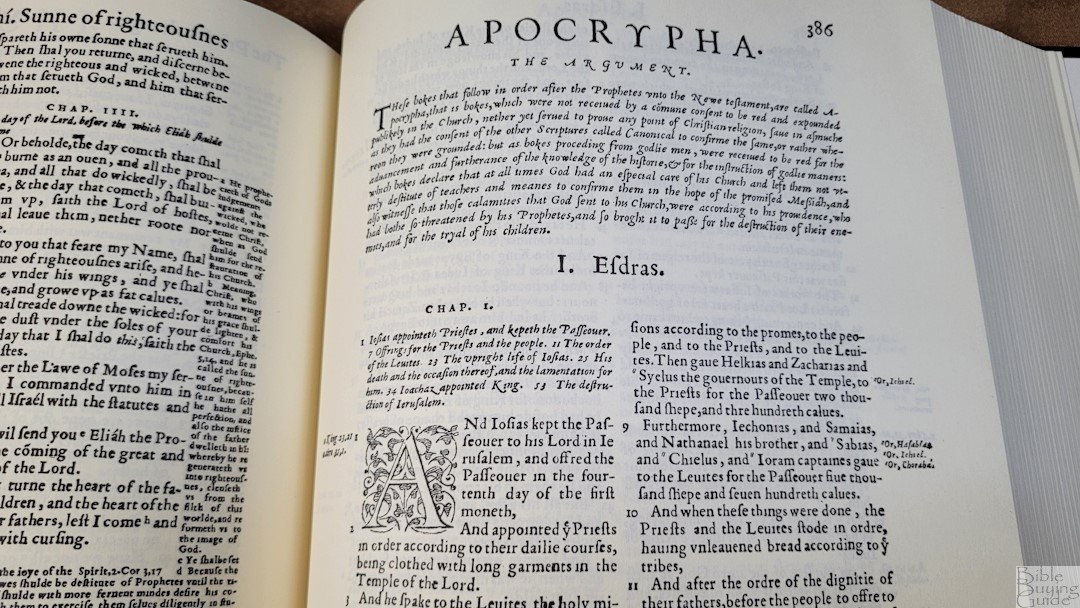
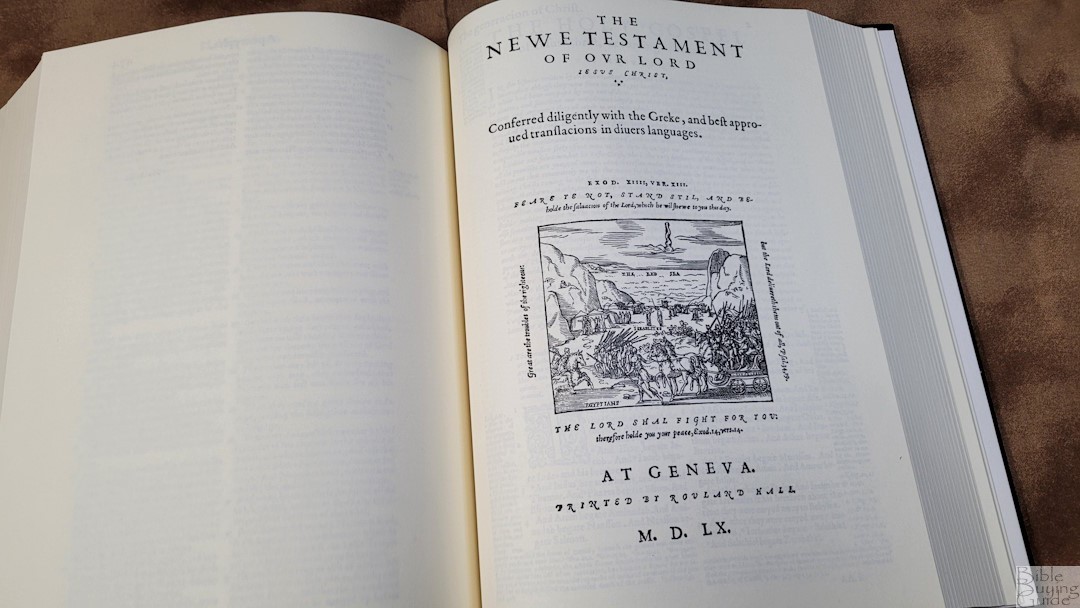
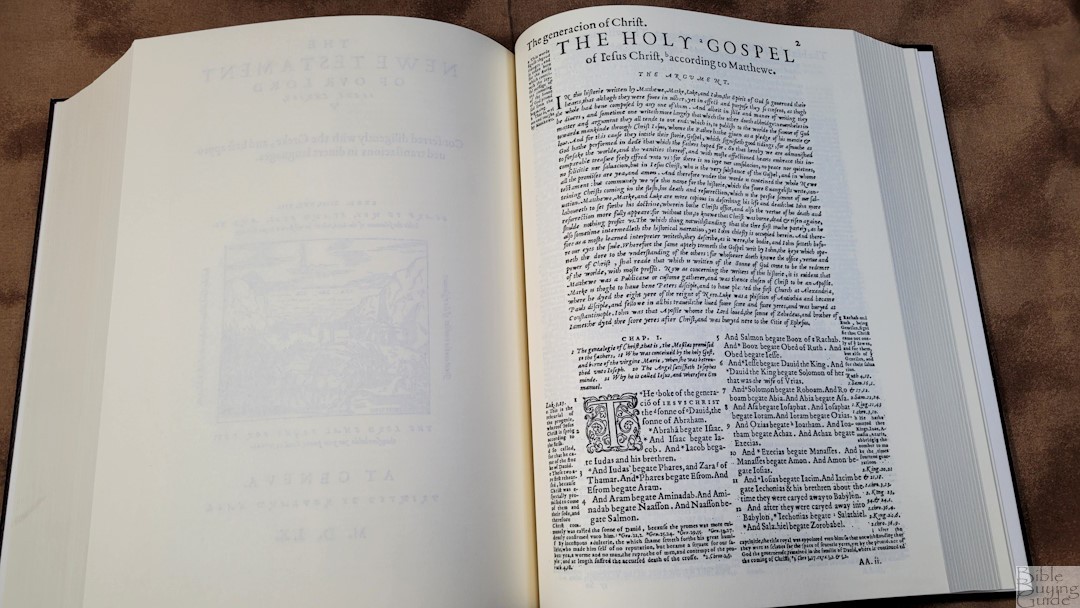
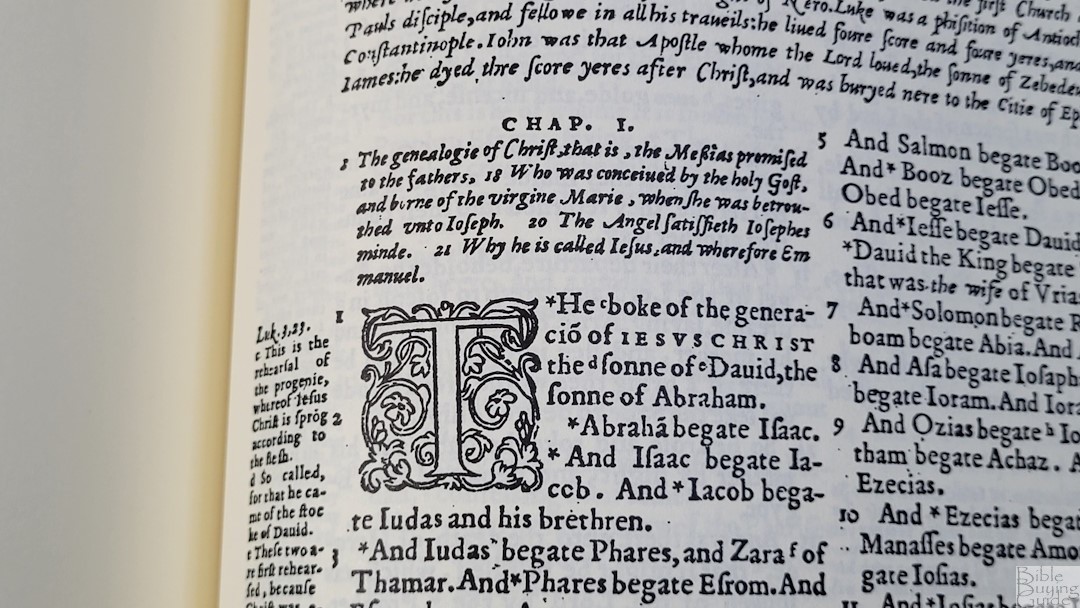
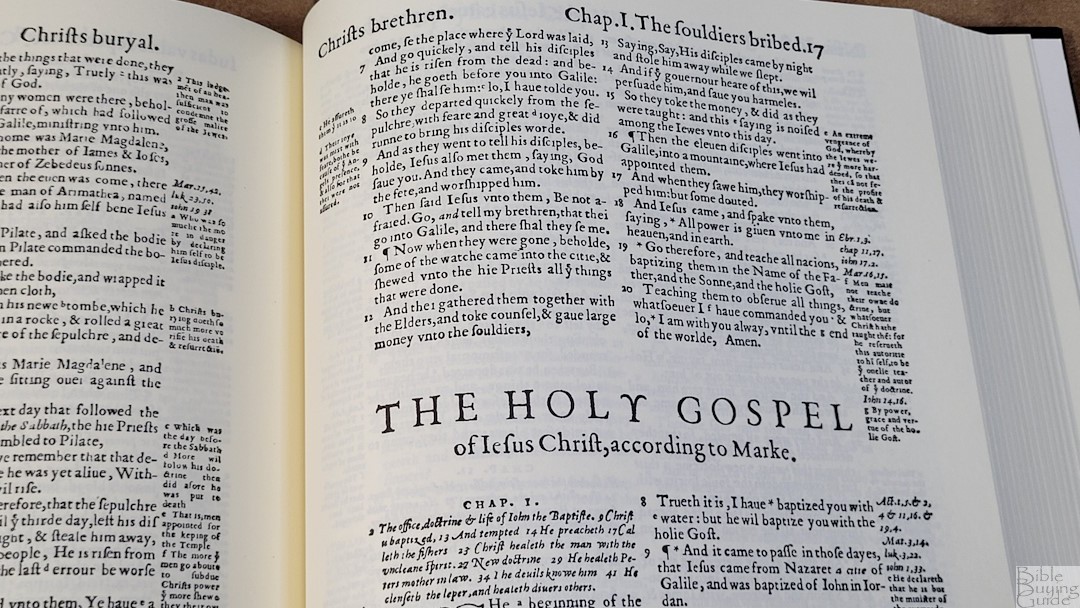
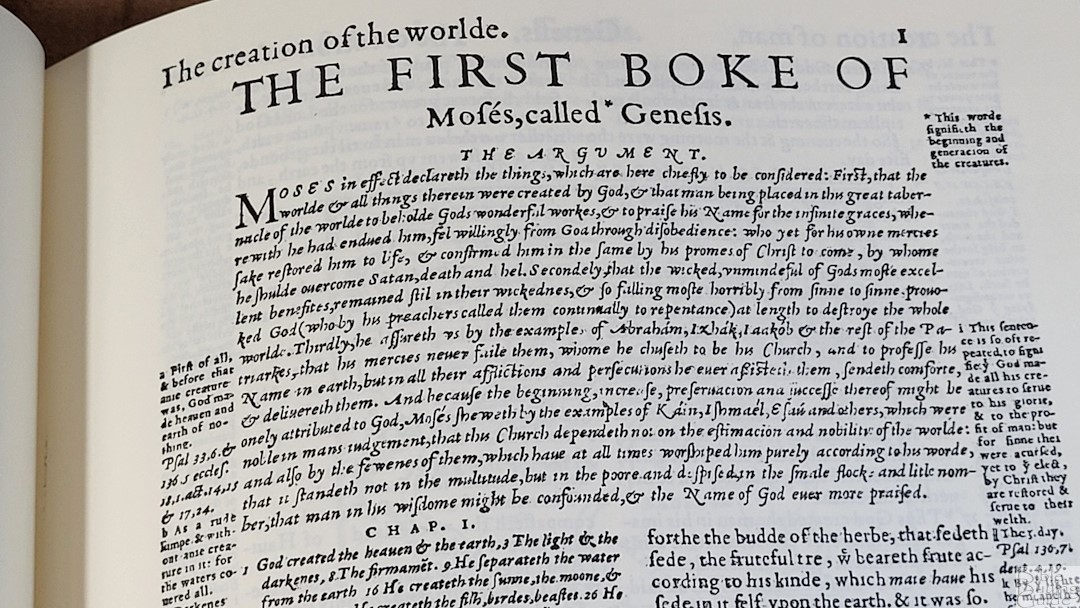
The text is around 10-point It’s bold and dark throughout the text. The typeface is highly readable, but there are places where the text isn’t printed cleanly, making it hard to read. Books start on the page where the previous book ended. Some of the letters used in 1560 aren’t completely the same as those we use today. For example, the letter “s” looked like an “f”. Verse numbers are placed to the left of each column, so they stand out. The Apocrypha is placed between the Testaments.
Footnotes
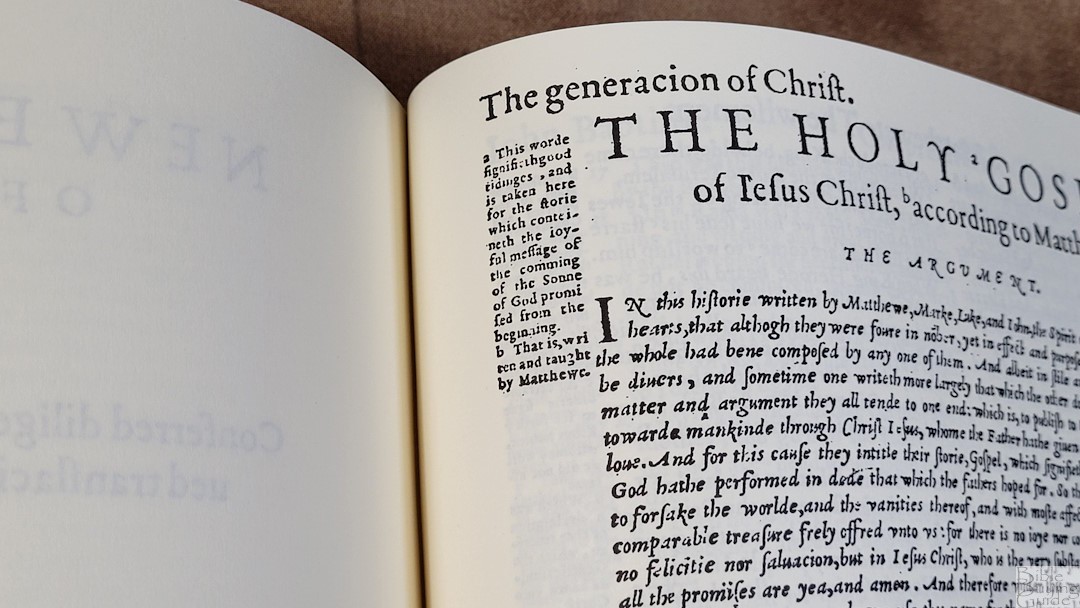
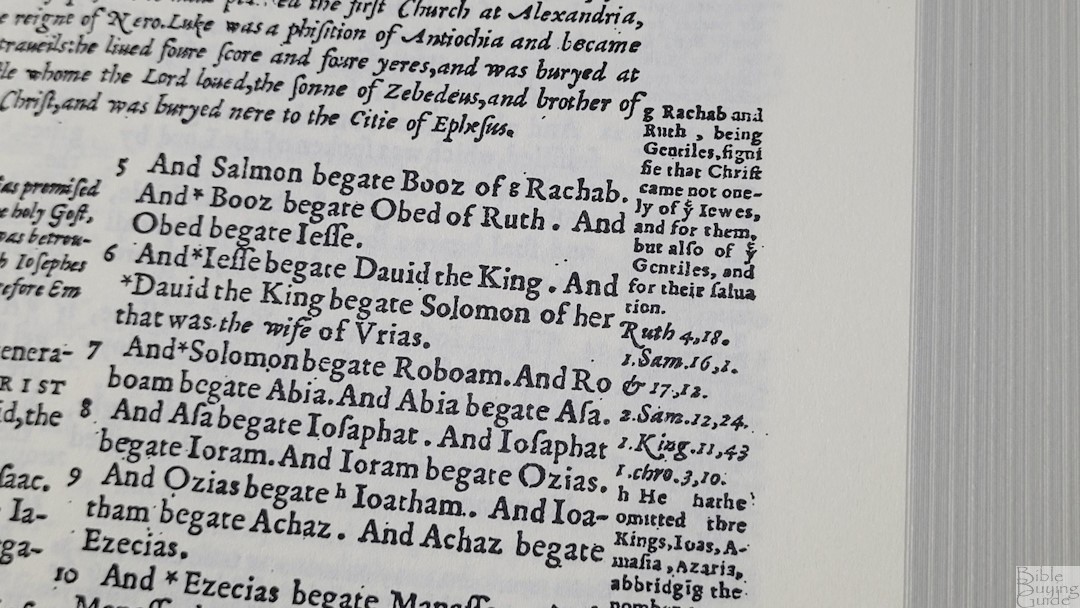

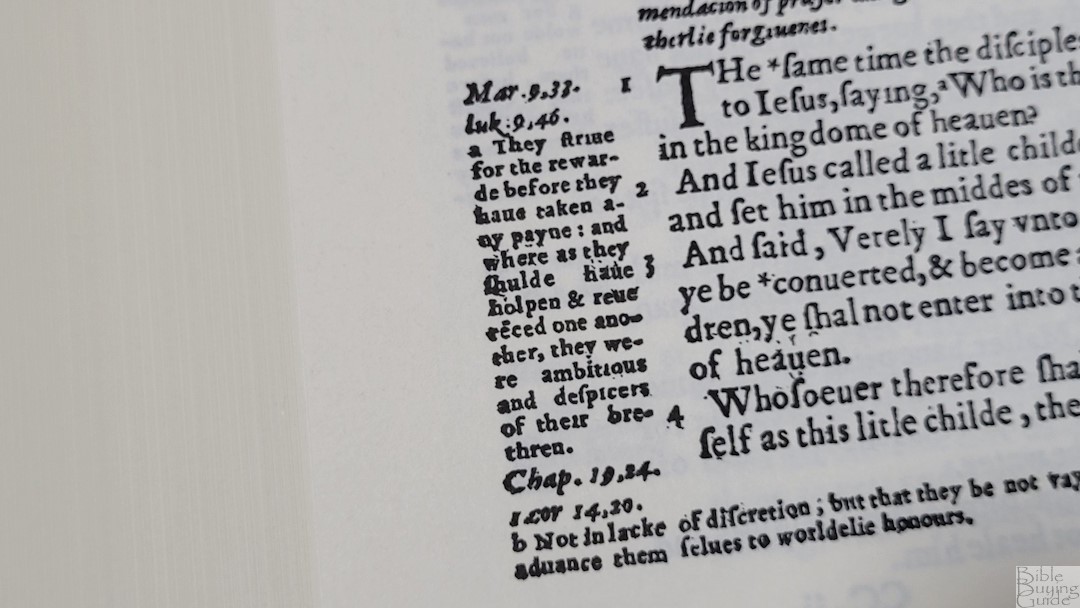
The footnotes are placed in the outer margins and in the footer. Most are close to the verses they correspond to. They’re keyed to the text with letters. They provide commentary on the text with Calvinistic and Protestant Reformation influences. A few places, such as the beginning of Genesis and the middle of Exodus, include drawings. Some of the notes include references.
Extras
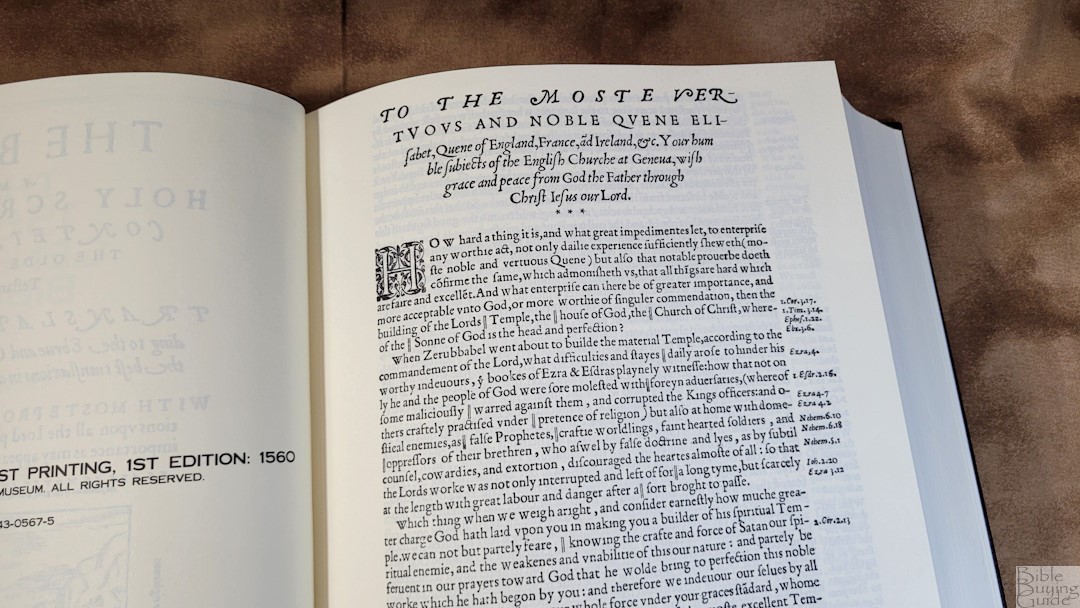
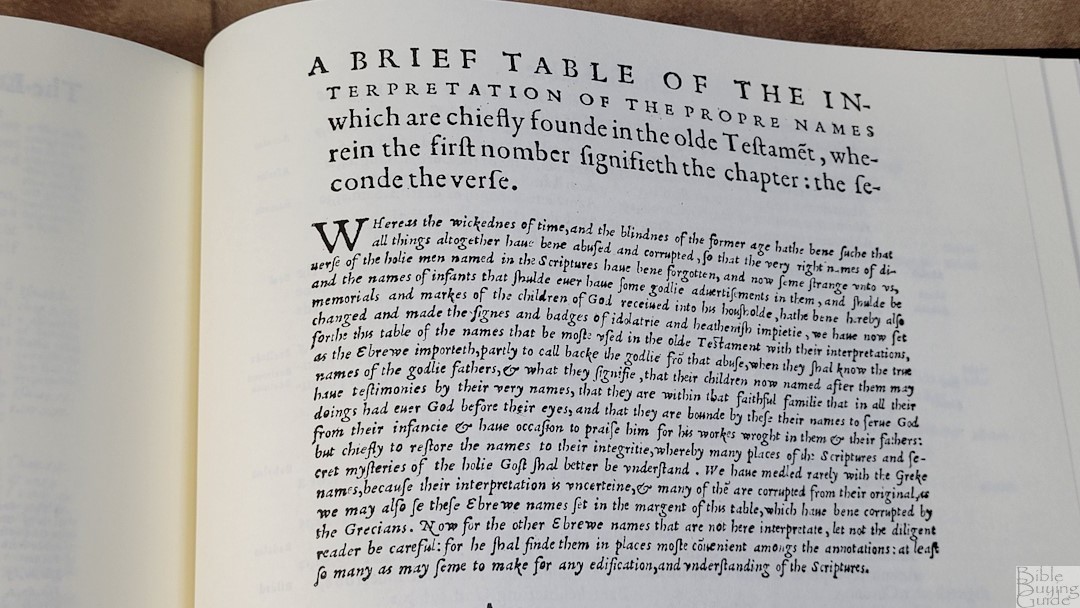
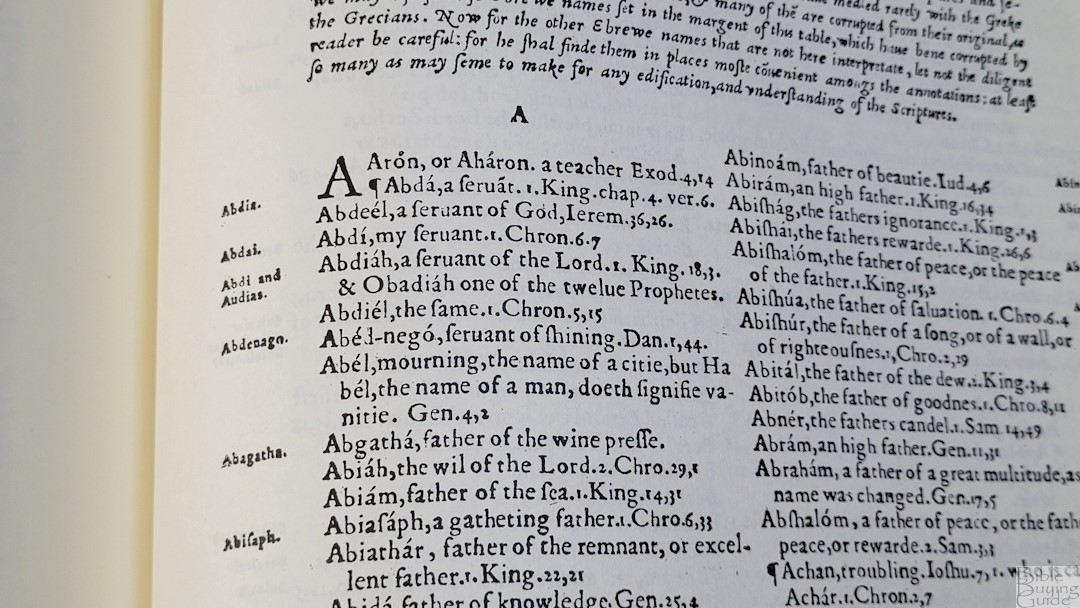
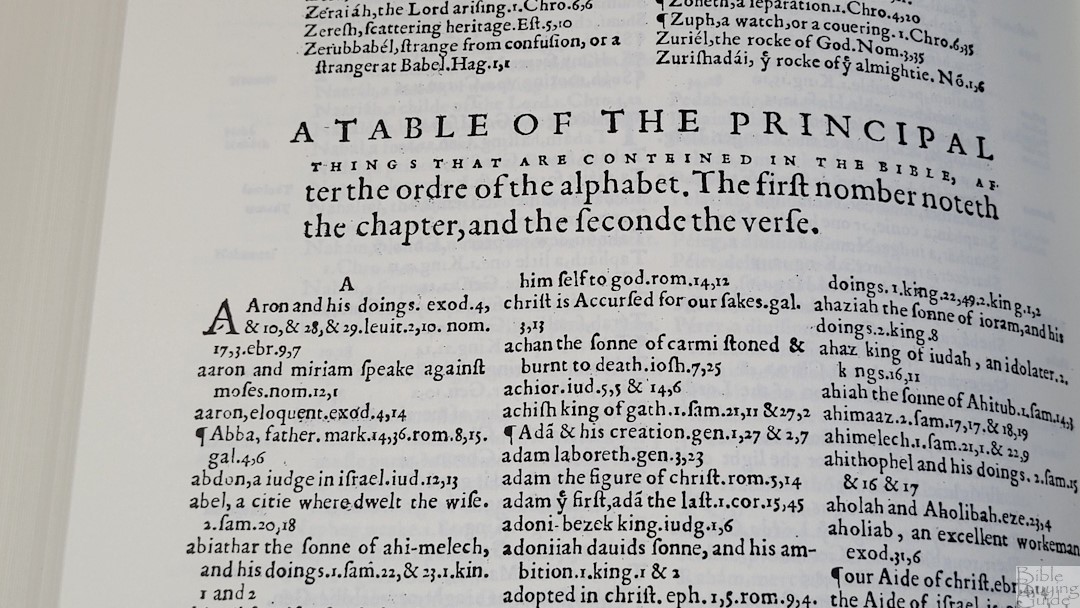
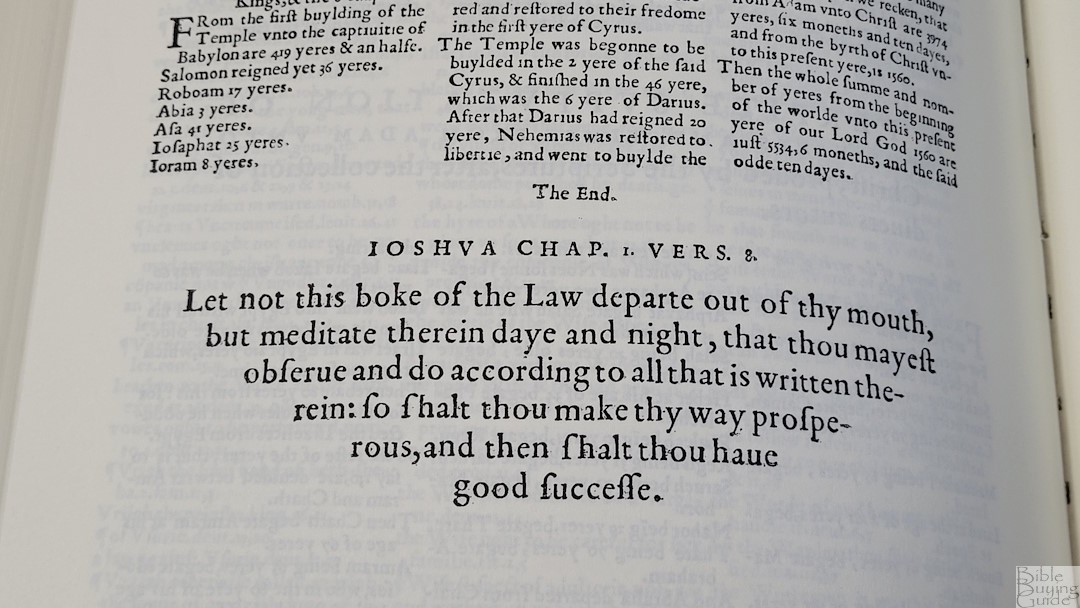
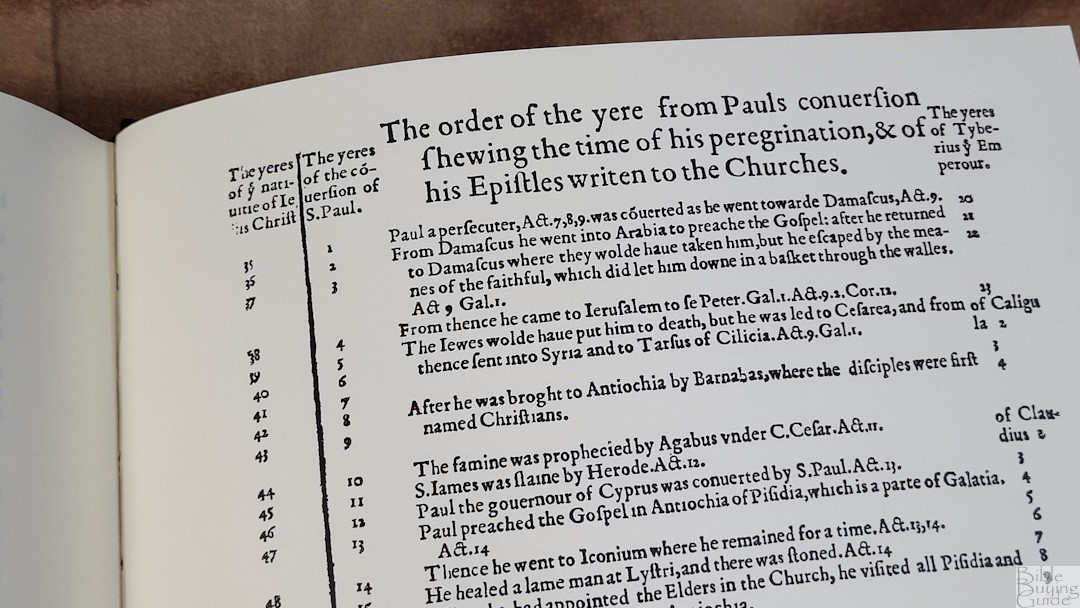
In the front is the original introduction to the Geneva Bible. In the back as a few tables that provide some good basic biblical information. Extras include:
- Introduction
- A Brief Table of the Interpretation of Names
- A Table of Principle Things in the Bible
- A List of Years and Times of Biblical Authors
- A Timeline of Years From Paul’s Conversion
Geneva Bible Leaf
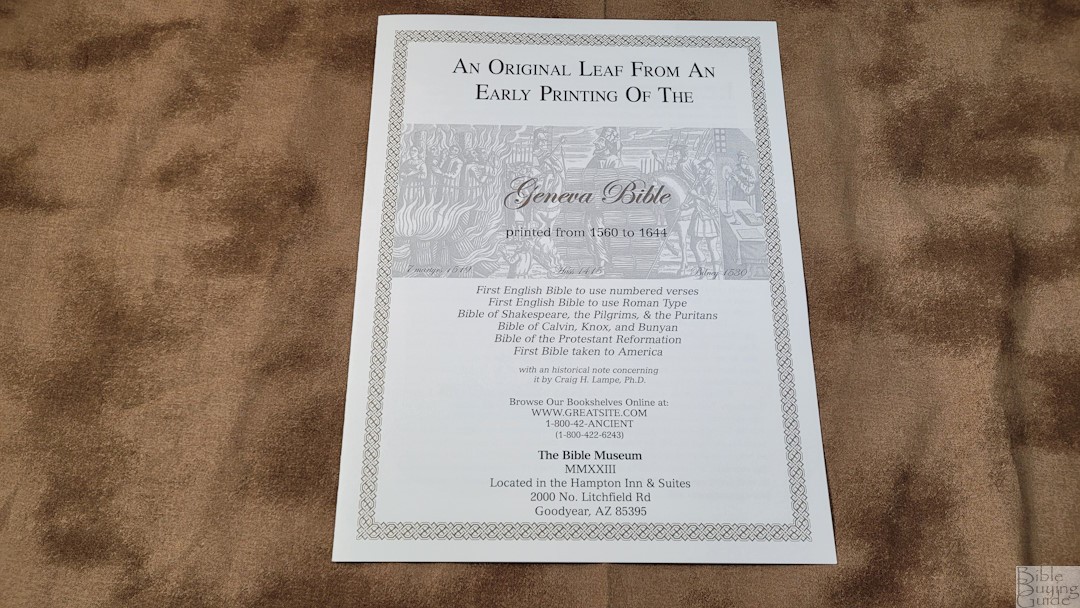
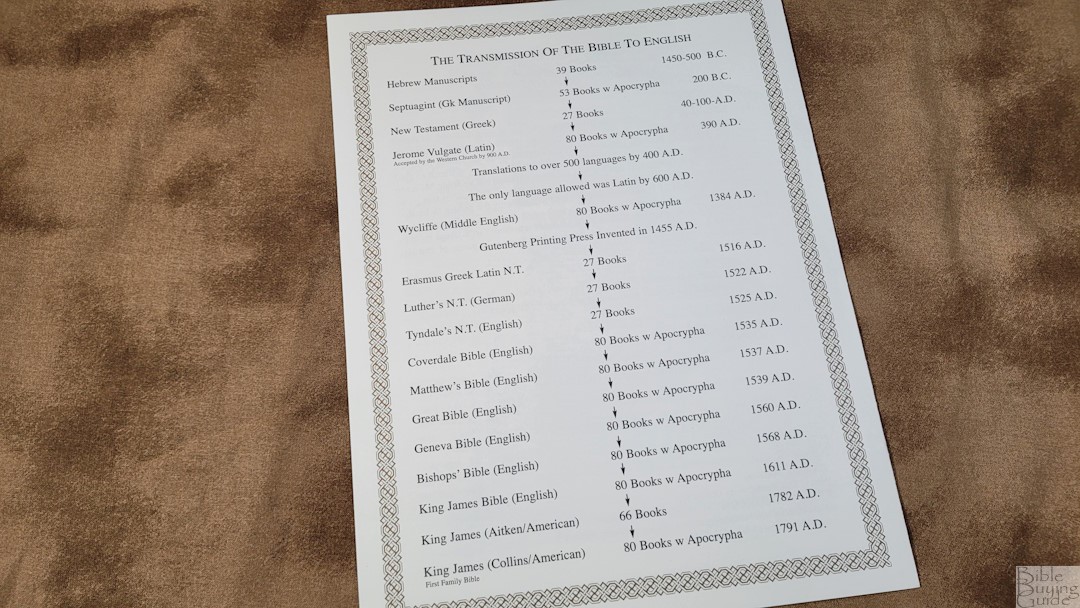
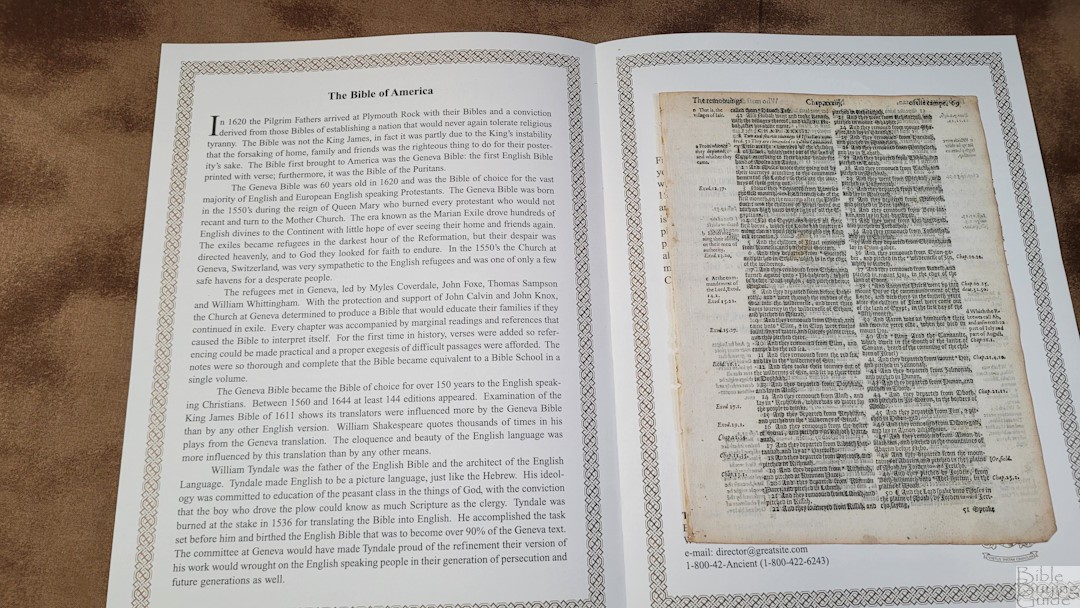
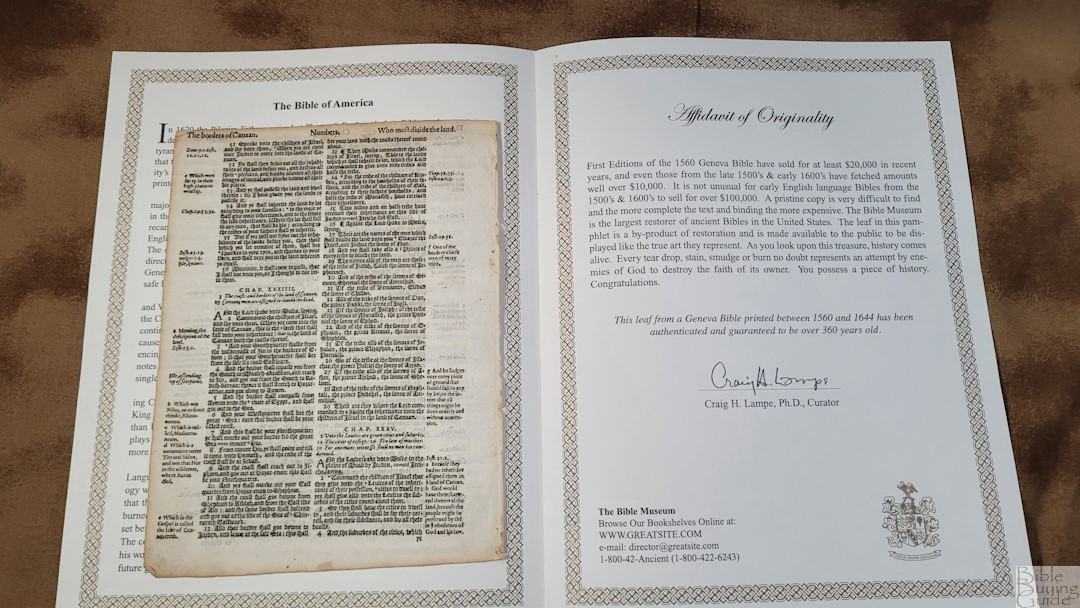
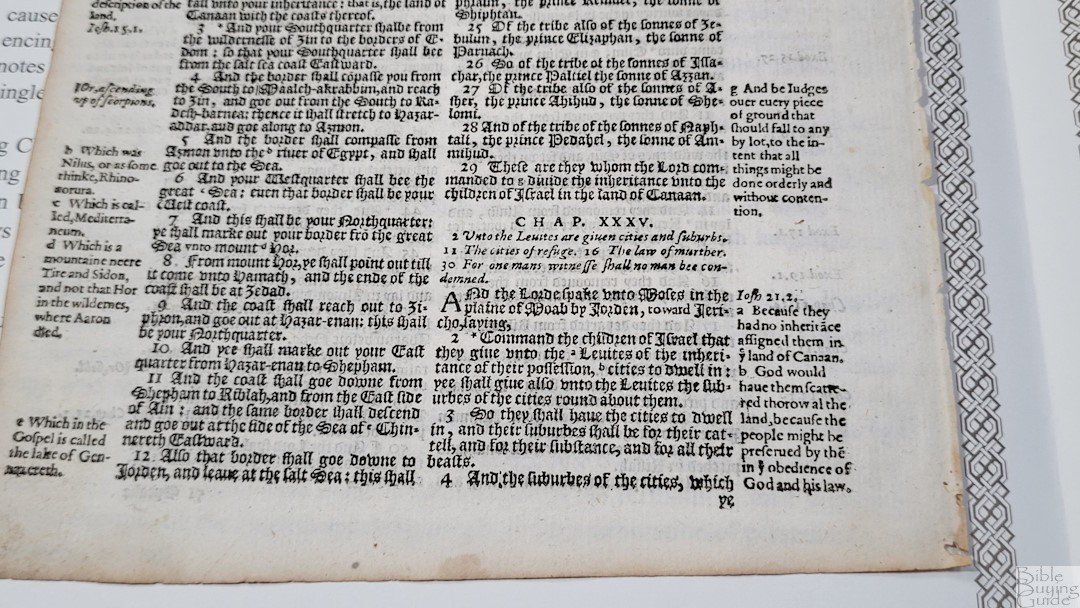
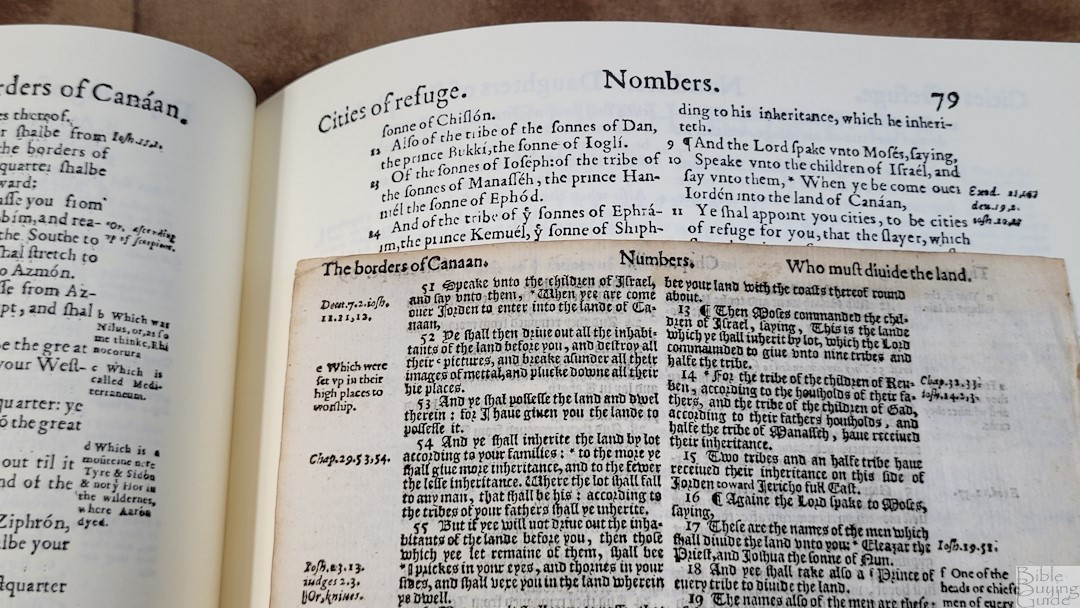
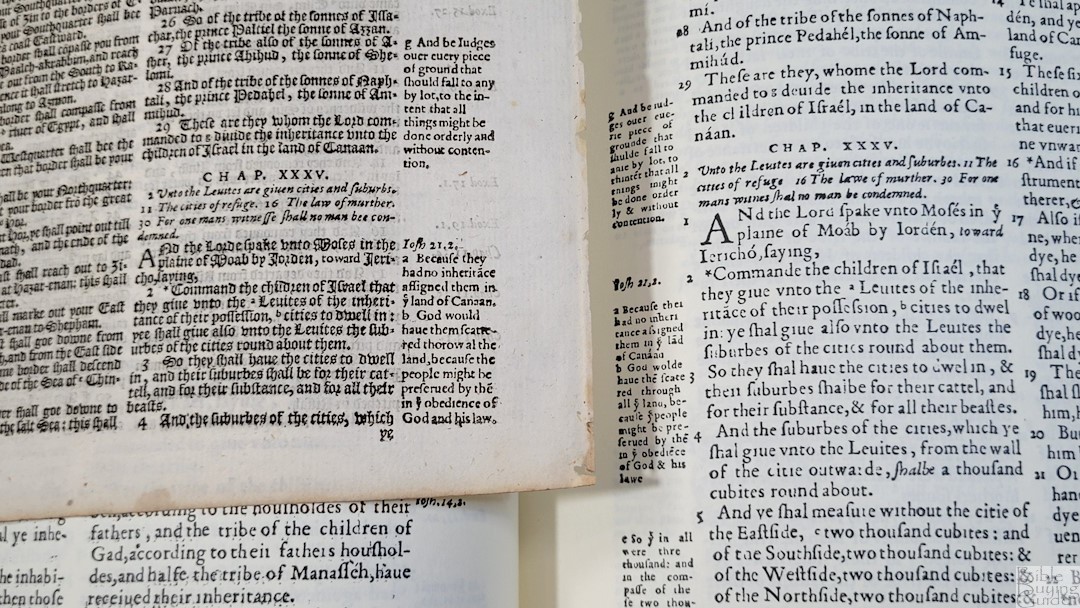
As a bonus, this Bible includes a leaf (an actual real page) from an original Geneva Bible that is certified to have been printed between 1560 and 1644. It’s guaranteed to be over 360 years old. It’s a smaller, quarto size, edition with a gothic-style typeface. The leaf normally sells for $99, but it’s included for free. It comes with a short pamphlet that discusses the Geneva Bible and its significance in America. It also includes information about the leaf and a timeline of Bible translations in English. The leaf is a testament to how far we’ve come in Bible printing.
Conclusion

The 1560 Geneva facsimile is an interesting Bible and it’s a great way to own a replica of this historically significant Bible. I don’t recommend the 1560 Geneva facsimile if reading is your goal, but it’s excellent for use as a showcase item.
_________________________________________________________
This Bible is available at (includes some affiliate links)
_________________________________________________________
The KJV Store provided this Bible in exchange for an honest review. I was not required to give a positive review, only an honest one. All opinions are my own.


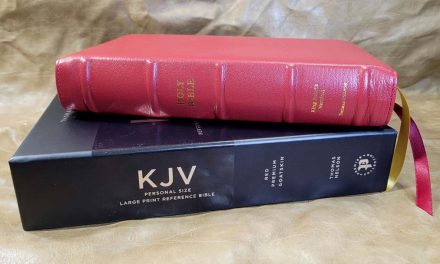
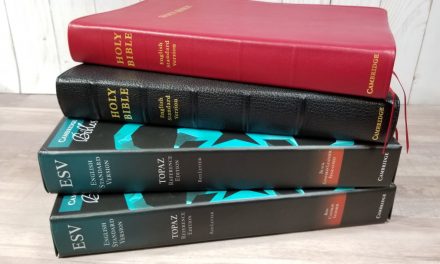






I was wondering how many pages the Geneva Bible has?
Hi. It has 1226.
It seems that all Geneva 1560 Facsimile versions are now unavailable anywhere online… there is a PDF version available on the internet archive website.